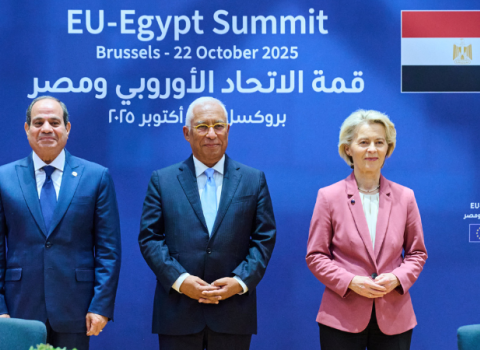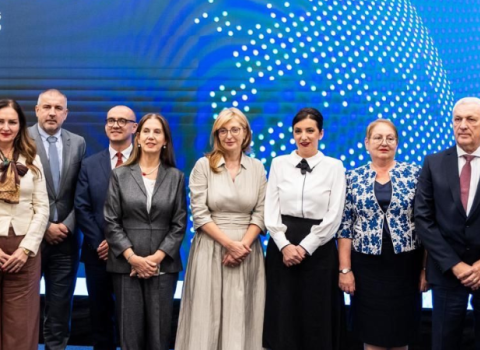IP|Business is supported by Foley & Lardner LLP
The concept and implementation of regulatory approval of biosimilar products (also called follow-on biologics) is relatively old news in Europe. The European Union has had a system in place since 2005. The EU scheme allows the European Medicines Agency (EMA) to assess, and the European Commission to approve, biosimilar medicines, that is, medicines that are similar to a biological medicine already authorized. The European Commission has already approved a number of biosimilar medicines since April 2006, including biosimilar versions of human growth hormone, erythropoietin and G-CSF.
By contrast, just last year, the United States established a legal scheme for regulatory approval of biosimilars for the first time. On March 23, 2010, President Obama signed into law the Patient Protection and Affordable Care Act, which included, among other components, the new Biologics Price Competition and Innovation Act (BPCIA). Prior to enactment of this biosimilar legislation, no “abbreviated” regulatory approval system existed in the United States for biologics, unlike U.S. generic drug approval under the Hatch-Waxman Act of 1984.
Specifically, before enactment of the BPCIA, applicants seeking approval to market a biologic product in the U.S. could only pursue a non-abbreviated Biologic License Application (BLA) under the Public Health Service Act, or alternatively, a non-abbreviated New Drug Application (NDA), a “§505(b)(2)” NDA (also called a “me-too” NDA) or an Abbreviated New Drug Application (ANDA) under the Federal Food, Drug, and Cosmetic Act and Hatch-Waxman Act. The BPCIA now creates a pathway for U.S. Food and Drug Administration (FDA) approval of applications for biological products shown to be “biosimilar” to, or “interchangeable” with, reference products previously approved under a BLA.1
While the recent enactment of the BPCIA is certainly a step forward for biosimilars, the United States is still many years behind Europe regarding actual implementation of regulatory approval. As stated by FDA Commissioner Margaret Hamburg in November 2010, the FDA is at the “beginning of this journey,” and foresees that implementation will “be a dynamic process” that may “never be ‘done.’”
“Biosimilar”
Under the BPCIA, a “biosimilar” product is a biologic (such as a recombinantly produced protein, virus or blood component) that is “highly similar to a reference product notwithstanding minor differences in clinically inactive components” and for which “there are no clinically meaningful differences between the biological product and the reference product in terms of the safety, purity, and potency of the product.”2 A biosimilar product may also be designated as “interchangeable” with a licensed reference product, i.e., “may be substituted for the reference product without the intervention of the health care provider who prescribed the reference product.”3
In Europe, the EMEA has indicated that a “biosimilar medicine” is one that is “similar” but “not identical” to a biological medicine previously authorized. Active ingredients are “similar,” and “are used in general at the same dose to treat the same disease,” but may contain different inactive ingredients.4 The EMEA has indicated that differences between a biosimilar product and a reference product must be justified with appropriate studies, as assessed on a case-by-case basis.5
Market Exclusivity Periods
After years of debate in Congress, the BPCIA eventually established a 12-year period of “market exclusivity” from the date of licensure of the BLA product, which is extendable by six months of pediatric exclusivity.6 While debate on this issue has recently erupted again,7 the BPCIA itself also indicates that the first four years (or 4.5 years with pediatric exclusivity) is a period of “data exclusivity,” i.e., a time period when the FDA may not accept for review an application for a biosimilar or interchangeable product.8 Biologics also are eligible for orphan drug exclusivity. Assuming a biologic obtains orphan status, the FDA may approve a biosimilar/interchangeable application only after a seven-year orphan drug exclusivity period or 12-year market exclusivity period (or 7.5 years or 12.5 years with pediatric exclusivity) expires.9 A first approved interchangeable biosimilar product may also receive its own period of market exclusivity for a limited time.10
The 12-year market exclusivity period granted to BLA holders in the U.S. is a bit longer than the 10-year exclusivity period (potentially extendable for an additional year for certain new indications) granted to biologic innovators in Europe. The 12-year market exclusivity in the U.S. only blocks biosimilar applications, not other BLAs. In addition, a new 12 year exclusivity period will not be applied to a supplemental application filed by the BLA holder for the same biologic. Nor would a new 12 year period be applied to a subsequent application filed by BLA holder for: (a) a change resulting in a new indication, route of administration, dosing schedule, dosage form, delivery system, delivery device or strength, or (b) a structural modification that does not change safety, purity or potency.11 While the statute suggests that such changes might qualify an altered biologic product for its own 12-year exclusivity period, neither the BPCIA nor the FDA has explained (at least so far) what changes might suffice in this regard.
Recently, President Obama in his 2012 Budget proposed a change to reduce the market exclusivity period from twelve years to seven. While such a reduction appears unlikely at the moment, political pressures to reduce the U.S. budget may give this proposal some traction.
U.S. Patent Disputes/Litigation Stemming From Biosimilar Application Filings
Under the BPCIA, similarly to what happens when one files an ANDA under the Hatch-Waxman Act, submission of a biosimilar application to the FDA constitutes an act of patent infringement. This “infringement” triggers a complex process for resolving patent disputes. In one notable aspect, after filing a biosimilar application, a biosimilar applicant must provide a copy of its application, as well as other information describing its manufacturing processes, to the referenced BLA holder.12 Although the BLA holder must keep such material confidential and can only use it to evaluate infringement, this disclosure requirement is significant.13 So significant, in fact, it may act to deter at least some biologic companies from filing a biosimilar application in the first place, rather than a non-abbreviated BLA application.
Once a biosimilar applicant provides its application and manufacturing data, the applicant and BLA holder engage in an exchange of information, including multiple patent lists, as well as each party’s “factual and legal basis” of non-infringement/infringement and invalidity/validity regarding patents included in the lists. The parties also negotiate as to which patents, and how many patents, on respective lists will be litigated in court. As part of this process, if the parties do not reach an agreement, the biosimilar application ultimately decides the number of patents to be litigated (although not necessarily which specific patents), with the caveat that the BLA holder may sue with regard to at least one patent.
Biosimilar vs. ANDA Applications in the U.S.
In many significant aspects, the U.S. biosimilar scheme differs from the ANDA system for generic drugs. For example, there is no “Orange Book”14 equivalent in the biosimilar scheme, and likewise no “Paragraph IV” (or Paragraph I, II or III) certification requirement. The biosimilar scheme also contemplates that patents directed to methods of manufacture (not just those directed to chemical entities, formulations or methods of using) will be subject to litigation, unlike the Hatch-Waxman system where one may not list methods of manufacture patents in the Orange Book. In addition, ANDA filers are not required to provide a copy of their FDA submissions to the NDA holder (although they may want to provide confidential access, which is required if an ANDA filer wishes to file a declaratory judgment action against the NDA holder, assuming the NDA holder does not file its own suit within 45 days of receiving notice of the ANDA filing). NDA holders also do not provide any “factual and legal basis” of infringement and/or validity in response to the ANDA filer.
Another big difference in the biosimilar scheme is the lack of a 30-month stay of FDA approval. In the ANDA system, a 30-month stay acts to hold off final FDA approval of a generic drug until either 30 months have passed or a final federal court ruling decides (or settlement agreement states) that all patents at issue are invalid, unenforceable or non-infringed, whichever occurs earlier. Under the BPCIA, however, the FDA may approve an accepted biosimilar application at the agency’s discretion, thereby potentially allowing biosimilar applicants to market “at risk” earlier in the litigation process. On the other hand, if a biosimilar applicant provides its application and manufacturing information to the BLA holder (and other information, such as patent lists) in a timely manner, neither party may sue for declaratory judgment before the biosimilar applicant provides its 180-day notice of marketing, as discussed below.
180-Day Notice of Marketing
Under the BPCIA, a biosimilar applicant must provide notice to the BLA holder no later than 180 days before going to market. After receiving this notice, the BLA holder may seek a preliminary injunction prohibiting market entry until a court decides relevant validity, enforcement, and infringement questions regarding patents listed in previously exchanged patent lists, but not agreed upon to be subject to an infringement suit. In other words, for example, if a biosimilar applicant dictates that the BLA holder can sue regarding only one patent among many presented in patent lists, the biosimilar applicant runs the risk of being subject to a preliminary injunction regarding other patents originally discussed between the parties.
Next Steps Toward Implementation in the U.S.
So far, it appears that the FDA has not yet reviewed, much less approved, any biosimilar applications in the U.S. The FDA held a two-day public hearing on November 2-3, 2010, to obtain input from the public, and also accepted written comments until December 31, 2010. The FDA may provide at least some written guidance in the near future. While the FDA will likely look to the EU experience for guidance, the new U.S. biosimilar system is complicated, and in many ways quite different from the European system and the existing ANDA system. Thus, we may face a relatively long road ahead regarding implementation, especially regarding any biologics not yet approved in any country to date. Stay tuned to see how the FDA, biosimilar applicants, BLA holders, the U.S. court system, and perhaps even Congress, address the many questions that are likely to arise.
In the meantime, it is worth keeping in mind that financial analysts have valued the global market for biologics overall at an estimated $149 billion in 2010, and expect it to reach $239 billion by 2015.15 Analysts also predict a global market for biosimilars will likewise grow in coming years, and may reach $4.8 billion by 2015. 16 Thus, the ability to pursue and ultimately achieve regulatory approval of biosimilar products in the U.S. is likely to have a notable impact on the biologics industry, one way or another.16
Jacqueline Wright Bonilla is a partner with Foley & Lardner LLP
_________
[1] “No finished road for U.S. copycat biologics,” Reuters, November 9, 2010 (http://www.reuters.com/article/2010/11/09/us-summit-fda-biosimilars-idU…)
[2] 42 U.S.C. § 262(i)(2)(A) & (B).
[3] 42 U.S.C. § 262(i)(3); see also 42 U.S.C. § 262(k)(4)(A) & (B) (describing further criteria for being “interchangeable”).
[4] European Medicines Agency, “Questions and Answers on biosimilar medicines (similar biological medicinal products), ” Doc. Ref. EMEA/74562/2006 Rev. 1 (London, 22 October 2008).
[5] See, e.g., http://www.bio.org/healthcare/followonbkg/Europe.asp#foot (discussing “How has Europe Approached Biosimilars?” as presented by BIO); see also http://www.ema.europa.eu/docs/en_GB/document_library/Scientific_guideline/2010/11/WC500099361.pdf (draft guideline (EMA/CHMP/BMWP/403543/2010) presented by EMEA on November 18, 2010, relating to the regulatory approval of monoclonal antibodies, entitled “Guideline on biological medicinal products containing monoclonal antibodies”).
[6] 42 U.S.C. § 262(k)(7); 42 U.S.C. § 262(m)(2) & (3).
[7] Steven Lendaris, Fine-Tuning the Generic Biologic Approval Process, National Law Journal 20 (March 14, 2011).
[8] 42 U.S.C. § 262(k)(7)(B).
[9] See Patient Protection and Affordable Care Act, Pub L. No. 111-148 (2010).
[10] 42 U.S.C. § 262(k)(6).
[11] 42 U.S.C. § 262(k)(7)(C).
[12] 42 U.S.C. § 262(l)(1)(B)(i) & (2).
[13] 42 U.S.C. § 262(l)(1)(B)(ii)(II) & (C)-(H).
[14] FDA’s Approved Drug Products with Therapeutic Equivalence Evaluations list (referred to as the FDA’s “Orange Book”)
[15] See http://www.bccresearch.com/report/BIO079A.html (BCC Research article entitled “Biologic Therapeutic Drugs: Technologies and Global Markets”).
[16] See http://www.prweb.com/releases/biosimilars/human_growth_hormone/prweb8131268.htm (referring to a recent report by Global Industry Analysts, Inc.)





 A unique international forum for public research organisations and companies to connect their external engagement with strategic interests around their R&D system.
A unique international forum for public research organisations and companies to connect their external engagement with strategic interests around their R&D system.